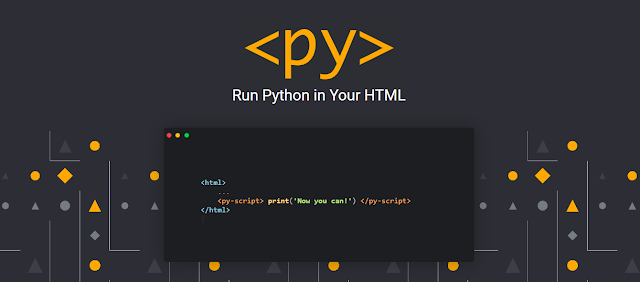How to Run Python On HTML - PyScript
Python is a general-purpose programming language that's used for everything from web development to data science. It's also a popular language for teaching programming courses because it's easy to learn and has a relatively small set of core features.
PyScript
PyScript is a JavaScript framework that allows users to create Python applications in the browser using a mix of Python and standard HTML. This can be useful for building interactive web applications, but it also means that PyScript works with any existing website or web application.
PyScript is most commonly used as a way to integrate Python into existing websites and web services. For example, you might want to add custom functionality to an existing website like Gmail or YouTube. In these cases, PyScript can be used as an API wrapper so that your code can interact with various APIs through the browser without having to write additional code in JavaScript or another language like PHP or Ruby.
This tutorial will show you how to get started with PyScript.
PyScript Features:
PyScript enables developers to write client-side code using Python, but it doesn't require a server-side component.
PyScript supports both Node.js and Python 3.5+ on the server side, and it uses JQuery for DOM manipulation and AJAX requests. The library also includes built-in support for Bootstrap, so developers can easily add styling to their apps.
PyScript Alternatives and Similarities:
PyScript is similar to other frameworks like PhoneGap or Titanium, but it's written entirely in JavaScript, so there's no need for compiling or deploying native code. This means you can use PyScript to write web apps that run on any modern browser, including mobile browsers.
PyScript uses the Emscripten JavaScript compiler to convert Python code into valid JavaScript, which runs in the browser just like any other JavaScript application. Unlike most other Python-to-JavaScript compilers, Emscripten doesn't require you to use C/C++ and all its related tools (like g++, Makefiles etc), so it should be easier to get started with than other options.
The framework works by creating a new window for your application, which will then load up the required code from your server when it loads. It's important to note that this doesn't mean you have access to all of the DOM elements or other things that are available in your main window. However, you can still interact with them through events or callbacks.
Download Pyscript :
To get started with PyScript, you will need to download it from GitHub. Once you have downloaded the script, include it in your HTML document using the following code as other HTML:
Simply include the pyscript.min.js and css file in your webpage and then use the following line of code:
<link rel="stylesheet" href="path/to/pyscript.css" />
<script defer src="path/to/pyscript.js"></script>PyScript CDN link:
PyScript works by compiling Python code into JavaScript, which can then be executed by an interpreter that runs on your browser's DOM. To use Pyscript CDN ,you will need to add this line in your HTML document and than It will work properly.
<link rel="stylesheet" href="https://pyscript.net/alpha/pyscript.css" />
<script defer src="https://pyscript.net/alpha/pyscript.js"></script>Conclusion:
PyScript is still in early development, so it may not be suitable for all projects. However, if you're looking for a way to embed Python into your website and don't mind using jQuery instead of Prototype.js or MooTools, then PyScript may be worth checking out.

